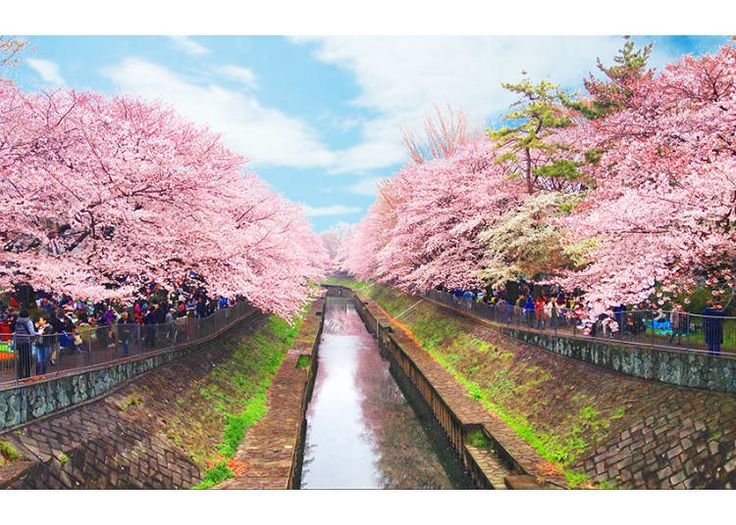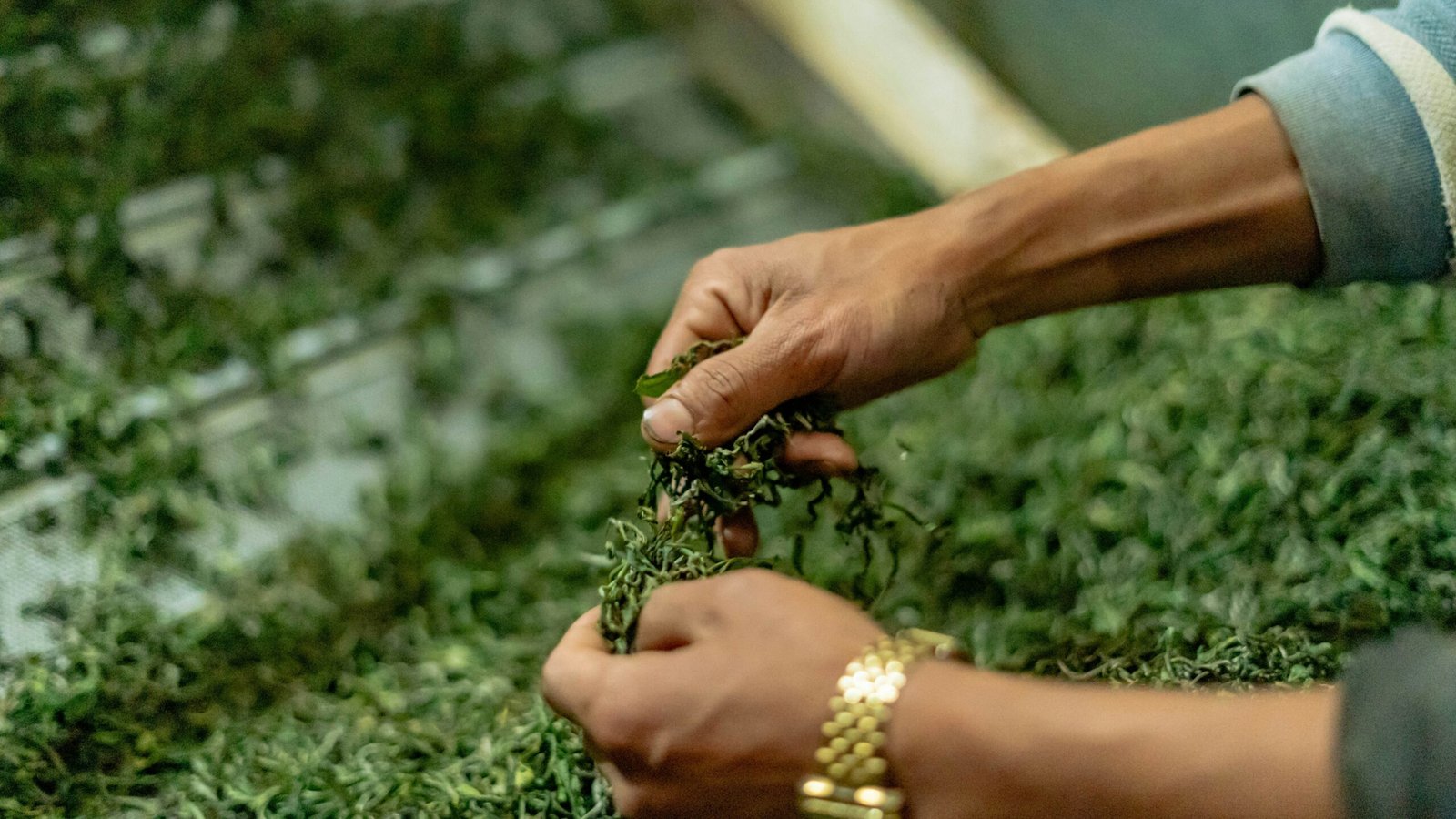Understanding the Cherry Blossom Season
The cherry blossom season, or “sakura” in Japanese, is a significant period for both locals and visitors to Japan. This enchanting floral display typically occurs between late March and early April, although the exact timing can vary significantly depending on the region. For instance, the cherry blossoms in Tokyo tend to peak around late March, while blooms in Hokkaido can take place as late as early May. Understanding these regional variations is essential for photographers looking to capture these iconic flowers at their most picturesque moment.
The cultural significance of the cherry blossom season in Japan cannot be overstated. These blossoms symbolize the fleeting nature of life and are celebrated through hanami, a traditional gathering where people picnic under the blooming trees. This practice not only highlights the beauty of the sakura but also reflects the appreciation of transient beauty, a central theme in Japanese culture. Capturing photographs during this season offers a unique insight into both the natural beauty of Japan and its rich cultural traditions.
To photograph cherry blossoms effectively, timing plays a critical role. The blooming period is brief, often lasting only a week or two; thus, it is crucial to keep a close eye on the seasonal forecasts. Weather conditions such as temperature and rainfall can also influence the bloom, making it advisable for photographers to stay informed about the situation in their chosen locations. Certain areas, such as Kyoto and Takato, are renowned for their beautiful cherry blossoms, yet these same spots also attract large crowds. Therefore, understanding the optimal times to visit these places allows photographers to experience and capture the beauty of cherry blossoms without the hindrance of excessive crowds. Being mindful of the regional differences and peak times can lead to stunning photography opportunities amidst the blossoming cherry trees throughout Japan.
Choosing the Right Location
When it comes to capturing the stunning beauty of cherry blossoms in Japan, selecting the right location is essential for avoiding large crowds and ensuring a serene photography experience. While popular sites like Ueno Park and Shinjuku Gyoen attract throngs of visitors, exploring lesser-known areas can yield equally breathtaking views without the bustling crowds.
One noteworthy destination is the Hirosaki Park located in Aomori Prefecture. Known for its impressive cherry tree collection, this park features prominent historical landmarks and a picturesque castle surrounded by vibrant blooms. The park’s spacious layout allows visitors to find quiet corners even during the blooming season. Similarly, the Takato Castle Ruins Park in Nagano Prefecture is renowned for its beautiful cherry blossoms, specifically its rare “Takato” variety. This hidden gem offers a tranquil atmosphere amidst the scenery, providing perfect opportunities for photography enthusiasts.
If you prefer a countryside experience, consider visiting the rural areas of Okayama and the scenic Kibi Plain. Here, you can find a blend of cherry blossoms and traditional Japanese landscapes, including rice paddies and historic temples, creating a unique backdrop for your photographs. Another hidden spot worth exploring is the Yoshinoyama mountain in Nara Prefecture. This area boasts thousands of cherry trees that bloom sequentially, offering a prolonged photography season and a range of picturesque views.
Furthermore, smaller gardens, such as the Shinjuku Gyoen National Garden’s lesser-known sections or regional parks like the Sangenjaya Cherry Blossom Park, can also provide splendid blossoms away from the busy tourist tracks. By carefully choosing your location, you can enjoy the ethereal beauty of cherry blossoms while immersing yourself in a peaceful, picturesque setting, ultimately enhancing your photography experience.
Planning Your Visit: Timing and Weather
To successfully photograph cherry blossoms in Japan, meticulous planning is essential, particularly concerning timing and weather conditions. Cherry blossoms, or sakura, bloom for only a brief period each spring, typically from late March to early April. However, the exact timing can fluctuate based on environmental factors such as temperature and rainfall. Therefore, it is crucial for photographers to monitor blooming forecasts, which are frequently updated by local meteorological agencies and tourism boards.
Several websites and mobile applications specifically designed for tracking cherry blossom developments provide valuable real-time updates. Engaging with these resources enables photographers to plan their visits with precision. Additionally, the best times of day for photography are generally early morning or late afternoon when natural light is softest. During these golden hours, the delicate petals of the cherry blossoms can be illuminated beautifully, creating visually stunning images.
Weather conditions also significantly affect the quality of photographs. Overcast skies can provide a soft diffused light, ideal for capturing the intricate details of the blossoms without harsh shadows. Conversely, a clear blue sky can enhance the vibrancy of colors but may also lead to considerable contrast, making it challenging to balance exposure. Photographers should anticipate varying weather scenarios and consider having protective gear for rain or unexpected changes in conditions.
Additionally, these factors can affect crowd levels at popular cherry blossom sites. For instance, weekdays or early mornings generally see fewer visitors, allowing for unobstructed photographs. By aligning your visit with favorable weather and blooming forecasts, you maximize your chances of capturing stunning images of cherry blossoms in Japan without the distractions of large crowds.
Techniques for Capturing Cherry Blossoms
Photographing cherry blossoms requires a keen understanding of various photography techniques to truly capture their delicate beauty. The first critical element is composition. A well-composed image draws attention to the blossoms without distractions. Utilizing the rule of thirds can help enhance the visual impact; place the main subject off-center to create a more dynamic scene. Including elements of the landscape, such as traditional structures or water features, can enrich the context and provide depth to your photographs.
Lighting plays a significant role in depicting cherry blossoms at their finest. The ideal time for photography is during the early morning or late afternoon when the soft, warm light enhances the colors of the petals. This golden hour light creates a stunning backdrop that highlights the fragile textures of the blossoms. On overcast days, diffused light is favorable as it minimizes harsh shadows, allowing for even exposure across the flowers. Be mindful of the direction of the light; positioning yourself so sunlight illuminates the blossoms from behind can produce a beautiful backlighting effect, giving petals a luminous quality.
Camera settings are crucial in capturing cherry blossoms effectively. A wide aperture allows for a shallow depth of field, isolating the flowers against a soft background. A setting around f/2.8 to f/5.6 works well for highlighting individual blossoms or clusters. In contrast, if you want to capture an entire grove of cherry trees, a higher aperture such as f/8 or f/11 will ensure greater focus across a wider area. Additionally, keeping your ISO low, around 100-200, will help maintain image clarity and prevent graininess, particularly in the tranquil environments often associated with cherry blossom locales.
Creating Unique Perspectives
When photographing cherry blossoms in Japan, one of the most effective ways to stand out is by creating unique perspectives and compositions. This can be achieved through various techniques that not only enhance your photos but also convey the beauty of the blossoms in a new light. Incorporating foreground elements is one such method that can add depth and interest to your shots. For instance, by positioning a branch with delicate blossoms in the foreground, you can frame the cherry trees in the background, creating a layered effect that draws the viewer’s eye.
Another technique to consider is playing with depth of field. Utilizing a shallow depth of field allows you to softly blur the background and emphasize your subject, the cherry blossoms. This approach can transform simple snapshots into ethereal images where the flowers appear as the main focus, almost glowing against a softened backdrop. Experimenting with aperture settings, such as using a large aperture (small f-number), will help achieve this desired effect, giving your photographs professional polish.
Furthermore, incorporating architectural elements, such as traditional temples or old houses, into your cherry blossom photography can enhance the context of your images. Japan’s rich architectural heritage provides a stunning backdrop that complements the delicate beauty of cherry blossoms. Capture a shot that includes a temple framed by cherry blossoms, or feature a traditional home with petals scattered around it. Such compositions add narrative and cultural significance, making your photographs not just a visual treat but also a reflection of Japan’s unique aesthetic.
In summary, through the strategic use of foreground elements, careful depth of field manipulation, and thoughtful incorporation of architectural features, photographers can create unique and captivating images of cherry blossoms. By exploring these techniques, you can produce photographs that effectively convey the enchanting experience of cherry blossom season in Japan, while minimizing contrary distractions, like crowds.
Editing Your Cherry Blossom Photos
Editing is a crucial step in showcasing the beauty of cherry blossoms in your photographs. Proper editing can enhance colors, adjust lighting, and eventually create a visually striking image that celebrates the ephemeral nature of these stunning flowers. To begin, consider utilizing basic editing software such as Adobe Lightroom or Photoshop, which offer a variety of tools to manipulate and perfect your images.
Start with basic adjustments to exposure, contrast, and brightness. Cherry blossoms are renowned for their delicate pink and white hues, so it’s essential to ensure that the exposure highlights these colors accurately. Use the exposure slider to brighten your image if it appears too dark, but be cautious not to overexpose the flowers, as this could wash out their vibrant tones. Additionally, fine-tuning the contrast can help distinguish the blossoms from the background, leading to a more balanced composition.
Color correction is another vital component of editing cherry blossom photographs. Selective color adjustments can enhance the pink shades of the blossoms, making them pop while maintaining realism. Consider increasing the saturation and vibrance specifically in the reds and pinks without affecting other colors in the frame. Utilizing the White Balance tool can also ensure that the colors appear true-to-life, capturing the natural essence seen during the blooming season.
For those looking to take their editing further, applying subtle filters can add a personal touch to your images. Softening sharp edges or slightly blurring the background can create a dreamy effect that accentuates the elegance of cherry blossoms. Finally, do not forget to check the overall sharpness of the image and remove any distractions that may detract from the natural beauty of the blossoms. With these strategies, your cherry blossom photographs can be transformed into stunning visuals that encapsulate the enchantment of this transient spectacle.
Respecting Nature and Local Culture
When photographing cherry blossoms in Japan, one must prioritize the respect for nature and the local culture that surrounds these beautiful trees. Cherry blossoms, or sakura, hold profound cultural significance in Japan, representing renewal, life, and the beauty of fleeting moments. As a photographer, it is crucial to approach these picturesque scenes with an understanding of their importance to the Japanese people. Being mindful of one’s actions while engaging with the environment not only enhances the overall experience but also fosters a respectful relationship with the local community.
One of the primary ethical photography practices involves avoiding the trampling of flowers or disturbing delicate flora. When capturing images, it is vital to remain on designated paths or areas where foot traffic is allowed. This practice ensures that the cherry blossom trees can continue to thrive for future generations to enjoy. Photographers should consider using telephoto lenses, which allow for capturing stunning close-ups without encroaching on the natural surroundings. By doing so, one contributes to the preservation of these iconic blooms while obtaining beautiful images.
Another essential aspect to consider is the experience of fellow visitors. Cherry blossom viewing often draws large crowds, especially during peak bloom season. Thus, it is important to be considerate of others’ space and their enjoyment of the sight. Avoid positioning yourself in ways that obstruct pathways or impede other visitors from taking photos. Simple gestures, such as asking before stepping into someone’s frame or moving aside, can foster a more harmonious environment for everyone involved.
Incorporating respect for both nature and culture into photography is ultimately about embracing the ethos of harmony, which is central to Japanese traditions. By practicing mindful and ethical photography, one can not only create stunning photographs of cherry blossoms in Japan but also promote a greater appreciation for nature and local heritage.
Recommended Gear for Cherry Blossom Photography
When capturing the ephemeral beauty of cherry blossoms in Japan, having the right photography gear can significantly enhance your experience and results. Whether you are an amateur enthusiast or a seasoned professional, selecting the appropriate equipment is crucial for achieving breathtaking images. For your photography adventure, start with a camera that allows you full manual control. Both DSLR and mirrorless systems are excellent choices, offering flexibility and superior image quality. Popular models from brands like Canon, Nikon, and Sony provide options suitable for various skill levels.
The choice of lens is equally important in floral photography. A prime lens with a wide aperture is ideal for achieving that beautiful bokeh effect, allowing the cherry blossoms to stand out against a softly blurred background. A 50mm or an 85mm lens is highly recommended, as they allow for sharp focus on the flowers while providing exquisite depth of field. For broader landscapes, a versatile zoom lens such as a 24-70mm can capture expansive vistas featuring cherry blossoms along with their surroundings. Remember that flowers often bloom in delicate pinks and whites, so using a lens that can maintain color accuracy is vital.
In addition to your camera and lenses, certain accessories can enhance your photography experience. A sturdy tripod is essential for capturing stable shots, particularly in low light or when employing slower shutter speeds. Neutral density filters can help manage exposure during bright days. Additionally, a polarizing filter can reduce glare and enhance colors, allowing for more vivid images of the blossoms. For those serious about capturing every detail, consider investing in a macro lens to photograph individual flowers and their intricate features. With the right gear in hand, you are well-equipped to capture stunning photographs of cherry blossoms while avoiding the crowds.
Capturing the Entire Cherry Blossom Experience
While photographing cherry blossoms in Japan, it is essential to embrace the entire experience, which transcends merely capturing the flowers themselves. The sakura season is not only about the serene beauty of the blossoms but also about the vibrant atmosphere surrounding them. To create a more comprehensive narrative, photographers should focus on their surroundings, local traditions, and the people who gather to enjoy this ephemeral spectacle.
As you set out to photograph cherry blossoms, consider the dynamic relationship between the flowers and their environment. Seek out picturesque parks, historic temples, and bustling urban landscapes adorned with pink blooms. These locations provide a backdrop that enhances the overall composition, enabling you to capture both the cherry blossoms and the cultural context in which they thrive. Pay attention to elements such as traditional lanterns, raked gravel gardens, and even food stalls selling seasonal treats to create a richer story.
Moreover, incorporating individuals into your photographs adds a human element that elevates the imagery. Document local residents and visitors who partake in hanami, or flower-viewing picnics, as they celebrate this cherished event. Capturing laughter, contemplation, and shared moments under the cherry blossoms showcases the connections that people have with nature and each other during this fleeting season. Take candid shots of families, friends, or couples enjoying the pink canopy, which invokes a sense of warmth and community.
Lastly, look for the subtle details that often go unnoticed. This could be a close-up of a cherry blossom petal caught in the breeze or local artisans at work creating sakura-inspired crafts. All these aspects contribute to an authentic portrayal of the cherry blossom experience in Japan, helping to encapsulate the beauty of the moment well beyond the blossoms themselves. By expanding your focus beyond just the flowers, you will create a compelling visual narrative that honors the full spirit of sakura season.







